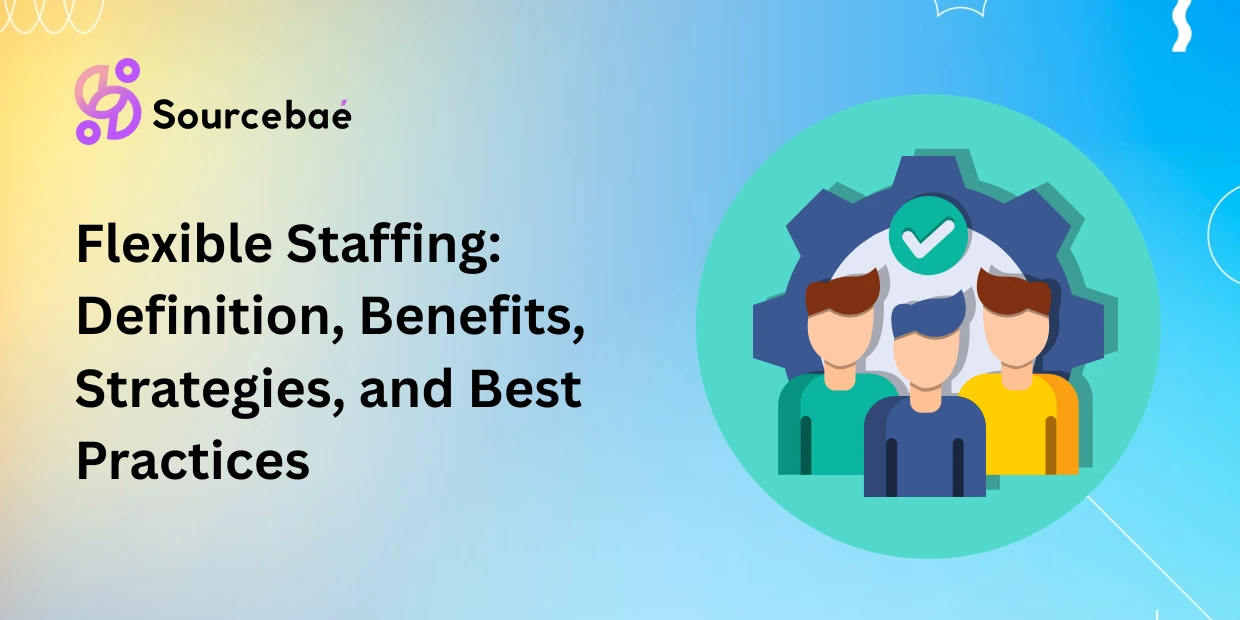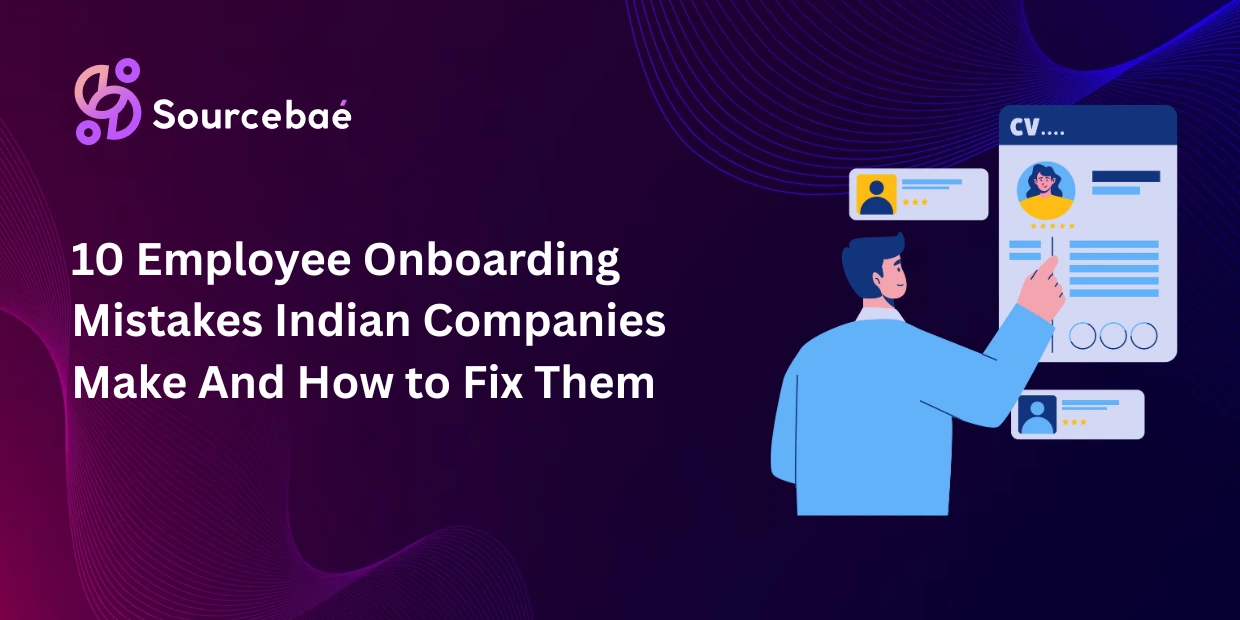What is flexible staffing?
Flexible staffing is a workforce strategy that allows businesses to adapt their labor force to changing demands. It typically means using contingent or on-demand workers – like temporary staff, freelancers, contract consultants, part-timers, and remote specialists – instead of full-time hires.
This approach enables companies to scale up or down quickly as projects or market conditions change. For example, Persona Talent explains that flexible staffing “allows companies to adjust their staffing levels according to their changing business needs”, helping firms meet peaks in demand without long-term commitments.
Why do you need a flexible staffing strategy?
You need a flexible staffing strategy to stay agile and cost-efficient in a rapidly changing market. It future-proofs your organization by enabling quick responses to business ups and downs. For instance, nearly half of companies (41%) plan to increase their use of contingent workers, signaling that flexible hiring is becoming essential. Implementing this model helps you save money and avoid overstaffing (you only pay for talent when needed) and adjust swiftly to new opportunities or slowdowns. Key benefits include:
- Agility & Scalability: Companies can reorganize teams or bring in specialists during high demand. One analysis notes that flexible staffing provides “agility, allowing businesses to reorganize their workforce quickly” in response to challenges. This means you can meet spikes in work without delay.
- Cost Efficiency: Using contract or temporary workers reduces costs (no salaries/benefits for idle staff). Flexible staffing “makes the cost of workforce efficiency soar” by matching staff to need. You avoid paying for unused capacity and cut overhead.
- Talent Attraction: Most candidates now want flexibility. A recent survey found 87% of workers prefer flexible staffing options. Offering flexible roles helps you win over top talent who might otherwise go elsewhere.
- Risk Mitigation: Businesses benefit from flexibility during uncertainty. In fact, 90% of corporations say “flexibility” is the key benefit of hiring contingent workers. Having a flexible workforce means you can scale down quickly instead of making painful layoffs of permanent staff.
A clear flexible staffing strategy thus improves resilience, reduces costs, and makes your company more attractive to high-quality candidates.
Types of Flexible Staffing
There are several flexible staffing models to choose from. Common types include temporary staffing, part-time staffing, contract staffing, and project-based staffing. Examples are:
- Temporary/Seasonal Staffing: Bringing on temporary staff during peak seasons or short-term projects (often via a staffing agency). Useful for things like holiday retail surges or event support.
- Contract/Project-Based Staffing: Hiring contractors or consultants for a defined project or timeframe. These specialists work only as long as the project requires, giving you expertise without full-time ties.
- Freelance/Gig Workers: Independent professionals (e.g. developers, designers, writers) who take on short-term assignments via freelance platforms or networks.
- Part-Time & Job-Sharing: Filling roles with employees who work fewer hours or split responsibilities. This provides schedule flexibility without permanent hiring.
- Remote/Hybrid Staffing: Employing remote workers or entire teams not tied to a physical office. Flexible remote staffing uses this model to hire talent anywhere in the world, on-demand.
- Managed Service Providers (MSPs) / Outsourced Teams: Engaging an external provider (like an IT or marketing agency) to supply a team on demand. The provider handles workforce management while you get results.
Each option offers different benefits. For example, a startup might use remote contractors to quickly add tech skills without hiring full-time, while a large retailer might use temporary staff for seasonal peaks. By combining these models, businesses create a flexible staffing solution tailored to their needs.
Building your flexible staffing strategy
To build a robust flexible staffing strategy, follow these steps:
- Assess and Define Needs: Identify which roles can be flexible and what skills are required. Decide which functions can be handled by contract or part-time workers (e.g. routine support, specialized projects) and which should remain in-house. (Hiring experts recommend first defining which positions can be remote or temporary.)
- Plan the Right Mix: Choose the right combination of staffing types. For example, use freelancers for creative tasks, contract engineers for short software projects, and part-time staff for ongoing support roles.
- Partner with Agencies or Platforms: Work with staffing agencies, online platforms, or vendors that specialize in flexible staffing services. Using a trusted provider can simplify hiring – they connect you to pre-vetted candidates who fit your culture and needs.
- Establish Clear Policies: Set guidelines for scheduling, communication, and performance. Define how remote/contract workers report progress and to whom, and ensure they understand deliverables and deadlines.
- Onboard Effectively: Just like full-time hires, flexible workers need onboarding. Provide the necessary resources, project briefings, and training so they contribute quickly.
- Monitor and Adapt: Track how flexible hires perform. Use feedback and metrics (like project completion time and quality) to refine your approach. Be ready to adjust your strategy as business needs evolve.
By following these steps, organizations (from startups to enterprises) can implement flexible staffing thoughtfully, ensuring it supports business goals while maintaining quality and compliance.
Impact of Flexible Staffing
When implemented well, flexible staffing can transform an organization. Key impacts include:
- Greater Agility: Companies with flexible workforces can pivot faster. For example, contingent workers already make up roughly 30–40% of U.S. labor, and these workers contribute about 15% of overall productivity. This means a substantial portion of the workforce is flexible by design.
- Improved Productivity: Many employees thrive under flexibility. Surveys show 77% of professionals report being more productive working remotely. Allowing remote or contract work often reduces distractions and boosts engagement.
- Cost Savings: Flexible staffing helps control costs. Studies indicate remote work can save companies up to $11,000 per employee per year (by cutting office and commute expenses). Employees themselves save around $6,000 annually, which improves retention and satisfaction.
- Expanded Talent Pool: Hiring flexibly lets you tap a global, diverse talent pool. For instance, flexible remote staffing enables you to hire experts from anywhere in the world. A diverse workforce drives innovation and fresh ideas.
- Business Continuity: Flexible staffing enhances resilience. Companies relying on remote and contract workers can continue operations during disruptions (economic downturns, pandemics, etc.) because work isn’t tied to a single location.
- Stronger Employer Brand: Offering flexibility boosts your reputation. Today 95% of workers want some form of remote work, so companies known for flexibility naturally attract and retain top candidates more easily.
In short, flexible staffing solutions help businesses become more agile, efficient, and innovative. They unlock productivity gains and new hiring options, giving companies a competitive edge.
Challenges of Implementing Flexible Staffing
Despite the benefits, flexible staffing has challenges:
- Integration & Communication: Managing a mix of permanent and flexible workers can strain communication. Without strong processes, project handoffs and team alignment suffer.
- Onboarding & Training: Temporary staff often need ramp-up time. In fact, the average contract worker’s tenure is only about 13 months, so frequent turnover can make knowledge transfer difficult. You must onboard and train quickly.
- Legal & Compliance: Hiring contingent talent, especially globally, involves navigating complex regulations. Companies must handle visas, taxes, and employment laws across regions. Failing to comply can lead to penalties.
- Quality Control: Ensuring consistent quality with a varied workforce is tough. Contractors may not initially know your standards, so managers should set clear expectations and provide feedback.
- Cultural Fit: Building company culture with many remote or contract workers requires extra effort. These workers may feel isolated unless you intentionally include them in team activities.
- Retention: Keeping top flexible talent long-term is challenging by nature. As noted, many contract workers stay for only about a year. Companies must work harder to rehire or maintain relationships with high performers.
Proactive planning (using collaboration tools, clear contracts, compliance partners) can mitigate most of these issues. Many organizations partner with staffing agencies to handle legal and administrative hurdles, making flexible staffing easier to manage.
Attracting and Retaining Contingent Talent
To attract and keep strong flexible workers, try these best practices:
- Offer Competitive Pay & Benefits: Even contract employees appreciate perks. For example, 25% of contingent workers say health benefits are a key factor when choosing a job. Providing partial benefits or bonuses can make your offers stand out.
- Emphasize Flexibility: Ironically, giving flexible workers flexibility is crucial. Let them choose when and where they work if possible. Autonomy and trust build loyalty.
- Strong Onboarding & Support: Welcome freelancers and contractors warmly. Give them the same tools, guidance, and mentorship that full-time staff receive. Assigning a mentor and ensuring they understand company goals increases engagement.
- Career Growth & Repeat Work: Highlight future opportunities. Many contractors stay longer if they see a chance for repeat projects or skill development. Share company direction and how they fit in it.
- Inclusive Culture: Involve contract workers in meetings and social events. Recognize their accomplishments publicly. Feeling part of the team encourages talent to stick around.
- Clear Expectations: Set transparent project goals, deadlines, and communication norms. Regular check-ins ensure issues are caught early and workers feel supported.
By treating flexible staff as valuable team members and addressing their needs, companies build a loyal talent pool. Happy, well-supported contingent workers are more likely to accept repeat assignments and advocate for your organization.
A Staffing Agency Can Help
Partnering with a staffing agency or platform that specializes in flexible hiring can greatly simplify the process. These agencies provide flexible staffing services and handle many administrative burdens. Advantages include:
- On-Demand Talent Pools: Agencies maintain rosters of pre-vetted contingent professionals in various fields. They quickly match your needs to available freelancers, contractors, or remote experts.
- Time Savings: Agencies handle recruiting, screening, and initial interviews, speeding up hiring. Your HR team spends less time sifting resumes and more on core tasks.
- Compliance & Payroll: Agencies manage payroll, taxes, and legal compliance (especially important for remote or international hires). This reduces risk and paperwork for you.
- Custom Solutions: Many agencies offer tailored solutions (e.g. managed teams, payrolling services, flexible contracts) to fit your budget and timeline.
- Industry Expertise: Specialized agencies know the talent market in your sector. For instance, a tech staffing firm will have access to skilled developers and understand how to evaluate them quickly.
For example, a firm specializing in flexible remote staffing can help a startup build a global team overnight. These partners also advise on best practices. In short, a staffing agency acts as an extension of your company, delivering workforce agility while you focus on growth.
Working with Sourcebae
Working with a modern hiring platform like Sourcebae can supercharge flexible staffing. Sourcebae is an AI-driven recruitment engine for global talent. It provides end-to-end hiring – sourcing, vetting, and managing candidates from a single platform. For instance, Sourcebae’s AI interviewer evaluates thousands of candidates and creates a pool of top pre-vetted professionals ready for hire. This lets companies onboard skilled contractors and remote specialists far faster and with greater confidence.
Our company, Homans.ai, partners with Sourcebae to leverage this cutting-edge technology. Homans.ai developed Saira, an AI recruiter that autonomously conducts interviews, evaluates candidates, and shortlists top talent. In practice, we define your hiring needs and Sourcebae’s platform – along with Saira – finds and manages the right flexible candidates (onshore or offshore). Together, we offer a complete flexible staffing solution: from compliance and global payroll to ongoing contractor support.
Partnering with Sourcebae and Homans.ai means you gain a trusted staffing agency plus AI-powered tools. This combination simplifies recruitment, cuts time-to-hire, and helps both startups and enterprises build agile, on-demand teams.
Flexible Staffing FAQs
What is a flexible staffing model?
A flexible staffing model is an approach where companies fill roles with on-demand workers (contractors, freelancers, part-timers) rather than full-time employees. This model lets businesses quickly adjust team size and skills to match current needs. Unlike traditional hiring, it emphasizes workforce agility.
What are flexible staffing services?
Flexible staffing services are offerings by agencies or platforms that provide contingent and remote workers. These services source and manage contract or temporary talent on your behalf. They essentially act as an on-demand talent provider, supplying the workforce you need without long-term commitments.
What are flexible staffing solutions?
Flexible staffing solutions refer to integrated tools and strategies (often tech-enabled) that help manage a variable workforce. Examples include AI recruiting platforms, managed service providers, and vendor management systems that streamline hiring, onboarding, and paying contract workers.
What is flexible remote staffing?
Flexible remote staffing is hiring remote workers on flexible terms (project-based, hourly, or part-time). It means filling roles with employees who work from anywhere. This approach expands your talent pool globally and lets you hire experts for specific tasks without needing them onsite.
How do I start a flexible staffing strategy?
Start by identifying roles or projects suited for contract or part-time work. Decide what mix of in-house vs. flex talent you need. Then partner with staffing agencies or use hiring platforms to find candidates. Establish clear policies and communication, and gradually onboard contingent workers. Finally, monitor outcomes and adjust your staffing mix as the business grows.
Flexible staffing unlocks major benefits for startups, enterprises, and HR teams. By embracing a flexible staffing model – backed by solutions like those from Sourcebae and Homans.ai – you can build a resilient, cost-effective workforce ready for any challenge.






